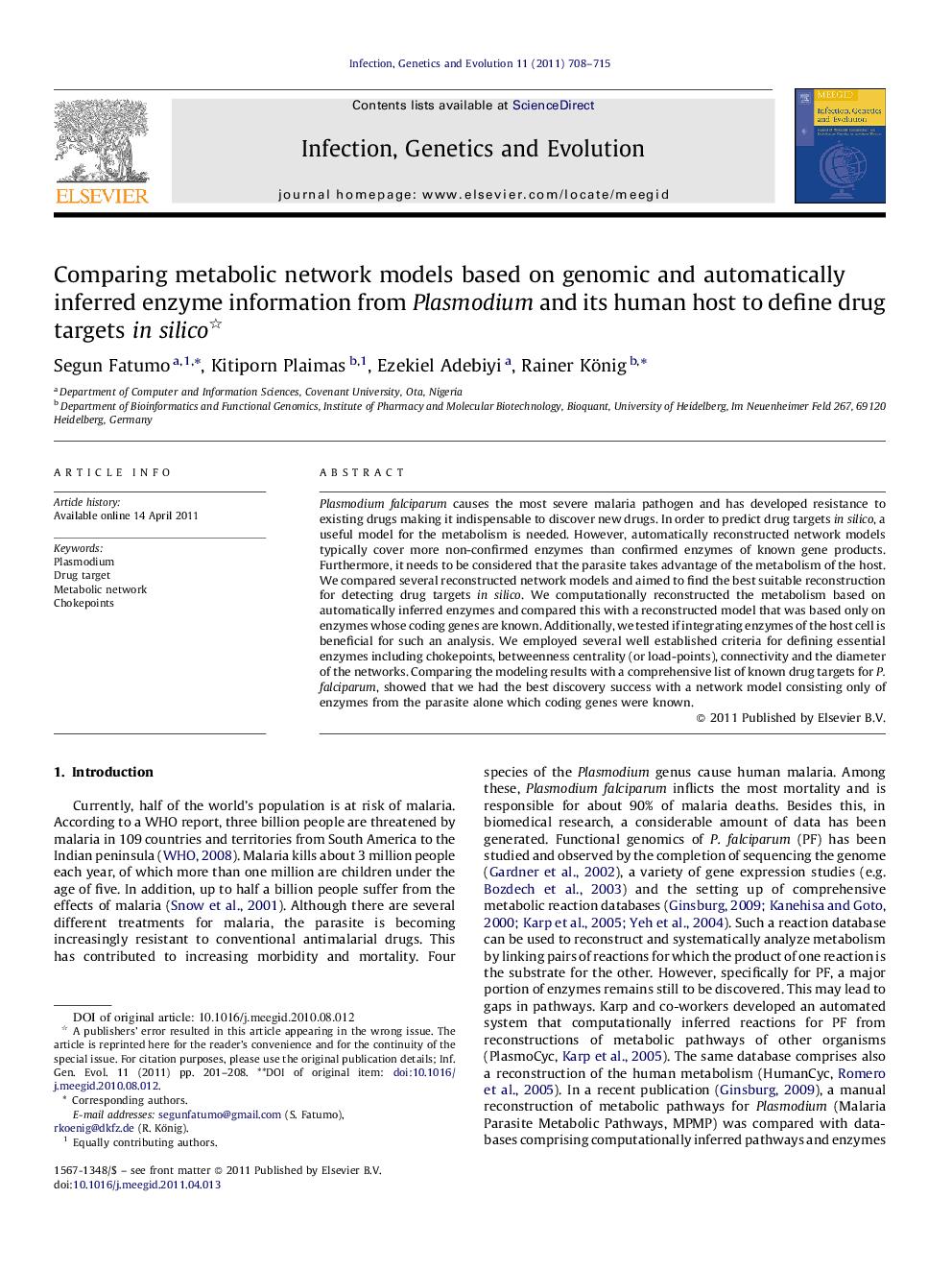| Article ID | Journal | Published Year | Pages | File Type |
|---|---|---|---|---|
| 2823151 | Infection, Genetics and Evolution | 2011 | 8 Pages |
Plasmodium falciparum causes the most severe malaria pathogen and has developed resistance to existing drugs making it indispensable to discover new drugs. In order to predict drug targets in silico, a useful model for the metabolism is needed. However, automatically reconstructed network models typically cover more non-confirmed enzymes than confirmed enzymes of known gene products. Furthermore, it needs to be considered that the parasite takes advantage of the metabolism of the host. We compared several reconstructed network models and aimed to find the best suitable reconstruction for detecting drug targets in silico. We computationally reconstructed the metabolism based on automatically inferred enzymes and compared this with a reconstructed model that was based only on enzymes whose coding genes are known. Additionally, we tested if integrating enzymes of the host cell is beneficial for such an analysis. We employed several well established criteria for defining essential enzymes including chokepoints, betweenness centrality (or load-points), connectivity and the diameter of the networks. Comparing the modeling results with a comprehensive list of known drug targets for P. falciparum, showed that we had the best discovery success with a network model consisting only of enzymes from the parasite alone which coding genes were known.
